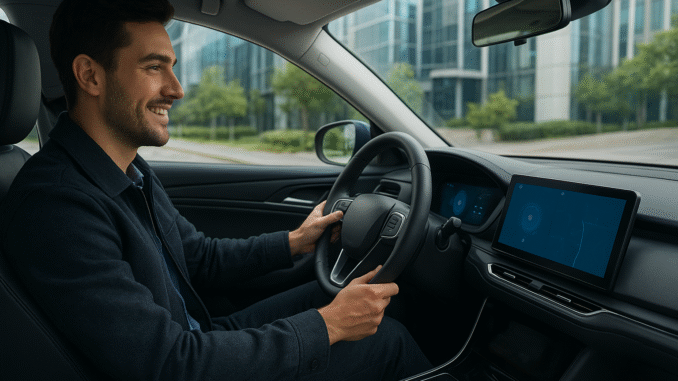
Top 10 Automotive Innovations Driving the Future of Cars in 2025
The automotive industry is going through a massive transformation. What once seemed futuristic—self-driving cars, vehicles powered entirely by electricity, or cars that communicate with each other—is now becoming a reality. By 2025, new technologies are reshaping how we drive, how vehicles are built, and even how we think about transportation. These innovations are not just making cars more efficient and sustainable, but also safer, smarter, and more connected than ever before.
In this article, we’ll explore the top 10 automotive innovations in 2025 that are driving the future of mobility.
1. Electric Vehicles (EVs) Leading the Market
Electric vehicles are no longer just a trend; they’re the future. By 2025, more manufacturers are shifting away from internal combustion engines and investing heavily in EV production. With improved battery technology, faster charging times, and longer driving ranges, EVs are becoming practical for everyday users. Governments worldwide are also supporting this shift by providing incentives and building charging infrastructure.
- Key advantage: Zero emissions and reduced fuel costs.
- Impact: A cleaner environment and a significant reduction in reliance on fossil fuels.
2. Autonomous Driving Technology
Self-driving technology has moved from concept to real-world testing, and 2025 is expected to be a pivotal year. Advanced driver-assistance systems (ADAS) are evolving into fully autonomous features, capable of handling city traffic, highways, and even complex driving situations.
- Examples: Tesla’s Full Self-Driving (FSD), Waymo’s robotaxis, and other brands working on Level 4 and Level 5 autonomy.
- Impact: Safer roads with fewer accidents caused by human error and increased convenience for commuters.
3. Vehicle-to-Everything (V2X) Communication
Imagine your car warning you about an accident two miles ahead or automatically adjusting speed based on traffic lights. That’s the promise of V2X technology, where cars communicate with other vehicles, infrastructure, and pedestrians.
- Key benefit: Enhanced safety by reducing accidents and traffic congestion.
- Impact: Smarter cities where vehicles and infrastructure work together for smoother transportation.
4. Advanced Battery Technology
Batteries are the heart of electric vehicles, and innovations in this field are crucial. In 2025, solid-state batteries are expected to become more widely available. They offer higher energy density, faster charging, and improved safety compared to traditional lithium-ion batteries.
- Impact: Driving ranges exceeding 500 miles on a single charge.
- Bonus: Longer battery lifespan, making EVs more affordable in the long run.
5. Sustainable and Recycled Materials
Automakers are focusing on eco-friendly vehicle production. From recycled plastics to natural fibers like hemp and bamboo, the materials used in cars are becoming more sustainable. Some brands are even producing interiors made entirely from recycled bottles or plant-based leather.
- Impact: Reduced carbon footprint in the automotive manufacturing process.
- Trend: Sustainability becomes a selling point for environmentally conscious buyers.
6. Over-the-Air (OTA) Software Updates
Cars are now more like smartphones on wheels. OTA updates allow manufacturers to improve features, fix bugs, or even enhance performance without requiring a dealership visit. By 2025, OTA updates will be standard in most new vehicles.
- Examples: Tesla already uses OTA updates to improve battery performance and add new features.
- Impact: Constantly updated vehicles with extended lifespans and better user experiences.
7. Advanced Driver Assistance Systems (ADAS)
Even before full autonomy, ADAS features are making cars safer. Systems like lane-keeping assistance, adaptive cruise control, automatic emergency braking, and blind-spot detection are now essential. By 2025, these features will become smarter, combining AI and machine learning for real-time decision-making.
- Impact: Fewer road accidents and improved driver confidence.
- Future: Insurance companies may even lower premiums for vehicles equipped with advanced ADAS.
8. Connected Cars and IoT Integration
The Internet of Things (IoT) is turning cars into connected devices. By 2025, most vehicles will come with built-in 5G connectivity, allowing real-time communication with cloud services, smart homes, and even wearable devices.
- Examples: Cars connecting to home systems—imagine your garage door opening automatically as you approach.
- Impact: More convenience, predictive maintenance alerts, and better navigation with live traffic updates.
9. Hydrogen Fuel Cell Vehicles
While EVs dominate the conversation, hydrogen fuel cell vehicles (FCVs) are also gaining traction. These vehicles use hydrogen gas to generate electricity, producing only water vapor as emissions. By 2025, countries like Japan and South Korea are pushing for more hydrogen-powered transportation.
- Key benefit: Faster refueling compared to EV charging.
- Impact: An alternative solution for long-distance and heavy-duty vehicles.
10. Personalized In-Car Experiences with AI
Artificial Intelligence is not just powering self-driving technology—it’s also transforming in-car experiences. By 2025, cars will feature AI-driven infotainment systems that personalize music, climate settings, and navigation based on driver preferences.
- Examples: Virtual assistants like Amazon Alexa and Google Assistant integrated into vehicles.
- Impact: Smarter, more enjoyable, and stress-free driving experiences.
The Road Ahead
The automotive industry in 2025 is about more than just transportation—it’s about building a sustainable, safe, and connected future. From electric vehicles and self-driving technology to AI-powered personalization and sustainable materials, these innovations are shaping the next era of mobility.
For drivers, this means:
- Cleaner, eco-friendly cars.
- Safer roads with fewer accidents.
- Smarter features that make driving more comfortable and efficient.
The future of cars is not decades away—it’s already here, and 2025 is the year it accelerates faster than ever before.
